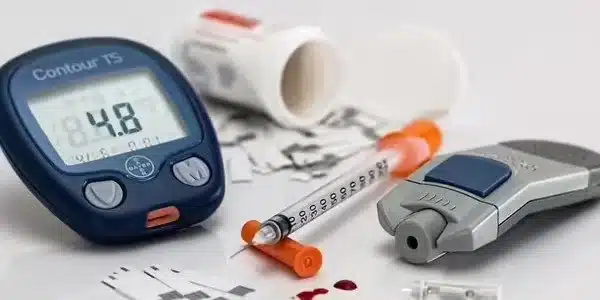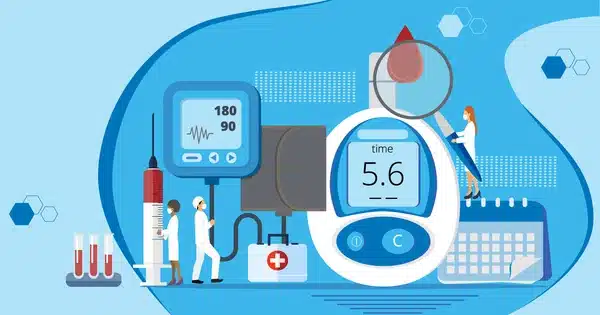Maintaining healthy blood sugar levels is critical for avoiding diabetes-related complications. Long-term blood sugar levels, known as HbA1c, can be used to accurately predict the risk of a person with type 1 diabetes developing eye and kidney complications. According to a study from Linköping University in Sweden, this level should be lower than 53 mmol/mol (7%). The study followed people for more than 30 years after they were diagnosed with type 1 diabetes, and the findings were published in Diabetes Care.
Diabetes can cause damage to small blood vessels in various organs. The reasons for this are unknown, but it has been known since the 1990s that good blood sugar control reduces the risk of complications. However, it has not been determined what level of long-term sugar, HbA1c, people with type 1 diabetes should have in order to avoid serious damage to blood vessels in the eyes and kidneys.
“Our study accurately determines the long-term sugar levels that can avoid complications. This knowledge can increase a person’s motivation to keep their blood sugar level under control,” says Hans Arnqvist, professor emeritus at Linköping University and study leader.
Our findings are related to avoiding complications caused by blood vessel damage. However, if a patient has low blood sugar, or hypoglycemia, it is not possible to control the blood sugar level so strictly.
Hans Arnqvist
Researchers in the current study, known as VISS (Vascular Diabetic Complications in Southeast Sweden), followed all children and adults younger than 35 years who developed type 1 diabetes between 1983 and 1987 and received care in Sweden’s South-East Healthcare Region. The study included all 447 newly diagnosed people in the area during this time period. The researchers tracked the patients’ HbA1c values, which reflect their average blood sugar levels over time. They also followed the progression of eye and kidney damage in these patients for between 32 and 36 years after diagnosis.
In type 1 diabetes, the small blood vessels in the eye are especially vulnerable to damage. Almost all patients have minor haemorrhages in their eyes that do not impair their vision. New blood vessels can form in the retina in some cases. The latter is known as ‘proliferative retinopathy’ and can result in blindness. Diabetes also has an effect on the ‘macula’ of the retina, which is where high-focus vision is located. Damage here causes blurry vision.

The kidneys are not as sensitive to high blood sugar levels as the eye, but important small blood vessels can be damaged here as well. The excretion of blood proteins in the urine is one effect of such damage. Albumin is the protein with the highest concentration in the blood, and when it is found in the urine, the condition is known as “albuminuria.” Kidney damage eventually leads to impaired kidney function and, in severe cases, kidney failure. If left untreated, this is a fatal condition, and the patient must either undergo dialysis or receive a kidney transplant.
A healthy person’s blood sugar level is tightly controlled, with a maximum HbA1c level of 42 mmol/mol (6.0%).
“Our findings show that people with type 1 diabetes who have had it for at least 32 years should keep their mean long-term sugar level below 53 mmol/mol (7.0%) if they want to avoid serious complications. As the level rises, so does the risk of eye and kidney complications. Our findings are related to avoiding complications caused by blood vessel damage. However, if a patient has low blood sugar, hypoglycemia, it is not possible to control the blood sugar level-so strictly,” Hans Arnqvist explains.
The target level for HbA1c that is suggested by the results of the VISS study agrees with the individual targets recommended by the American Diabetes Association. In Sweden, target levels are given for groups, rather than individuals.
The previous follow-up by the research group occurred 20 years after the disease onset. The results show that damage has occurred at lower blood sugar levels after 30 years than was the case after 20 years. Despite having blood sugar levels that are not higher than before, more patients have experienced damage. In other words, it appears that the threshold for developing complications gradually decreases over time. This means that the study cannot draw any conclusions about the recommended blood sugar levels for people with type 1 diabetes who are diagnosed more than 30 years ago.















